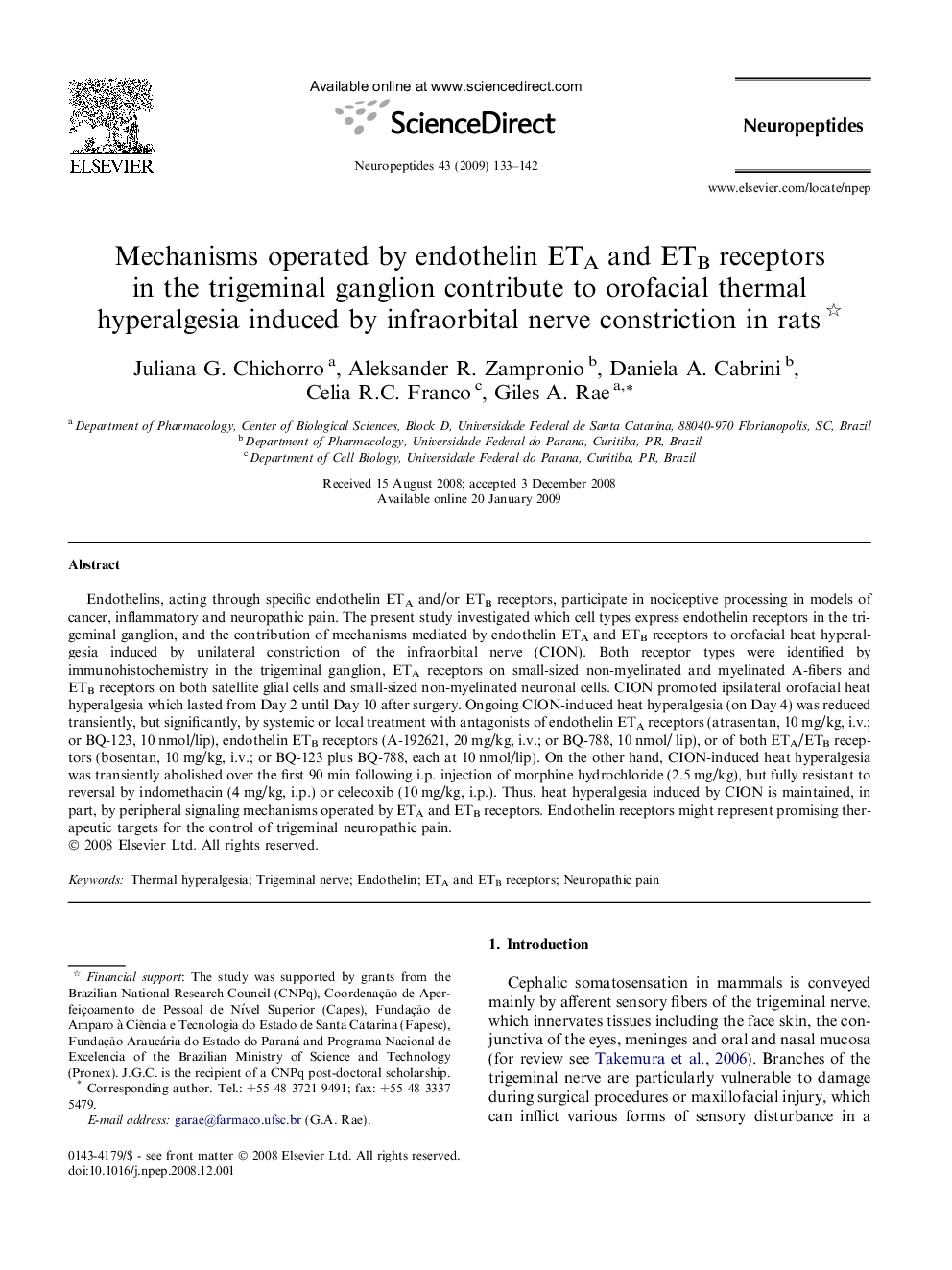| Article ID | Journal | Published Year | Pages | File Type |
|---|---|---|---|---|
| 2808585 | Neuropeptides | 2009 | 10 Pages |
Endothelins, acting through specific endothelin ETA and/or ETB receptors, participate in nociceptive processing in models of cancer, inflammatory and neuropathic pain. The present study investigated which cell types express endothelin receptors in the trigeminal ganglion, and the contribution of mechanisms mediated by endothelin ETA and ETB receptors to orofacial heat hyperalgesia induced by unilateral constriction of the infraorbital nerve (CION). Both receptor types were identified by immunohistochemistry in the trigeminal ganglion, ETA receptors on small-sized non-myelinated and myelinated A-fibers and ETB receptors on both satellite glial cells and small-sized non-myelinated neuronal cells. CION promoted ipsilateral orofacial heat hyperalgesia which lasted from Day 2 until Day 10 after surgery. Ongoing CION-induced heat hyperalgesia (on Day 4) was reduced transiently, but significantly, by systemic or local treatment with antagonists of endothelin ETA receptors (atrasentan, 10 mg/kg, i.v.; or BQ-123, 10 nmol/lip), endothelin ETB receptors (A-192621, 20 mg/kg, i.v.; or BQ-788, 10 nmol/ lip), or of both ETA/ETB receptors (bosentan, 10 mg/kg, i.v.; or BQ-123 plus BQ-788, each at 10 nmol/lip). On the other hand, CION-induced heat hyperalgesia was transiently abolished over the first 90 min following i.p. injection of morphine hydrochloride (2.5 mg/kg), but fully resistant to reversal by indomethacin (4 mg/kg, i.p.) or celecoxib (10 mg/kg, i.p.). Thus, heat hyperalgesia induced by CION is maintained, in part, by peripheral signaling mechanisms operated by ETA and ETB receptors. Endothelin receptors might represent promising therapeutic targets for the control of trigeminal neuropathic pain.
